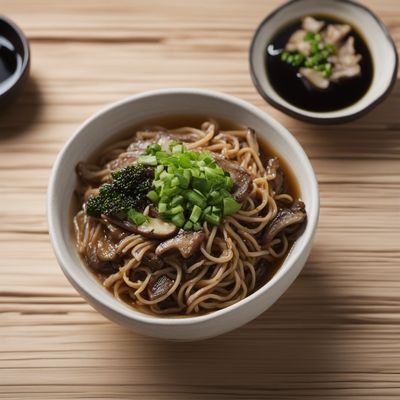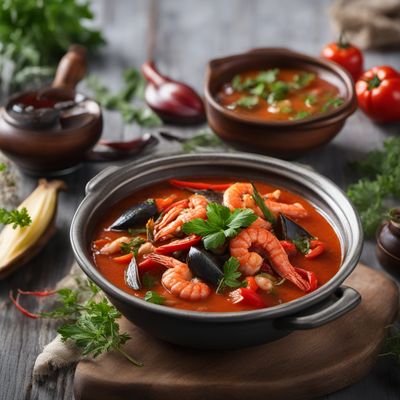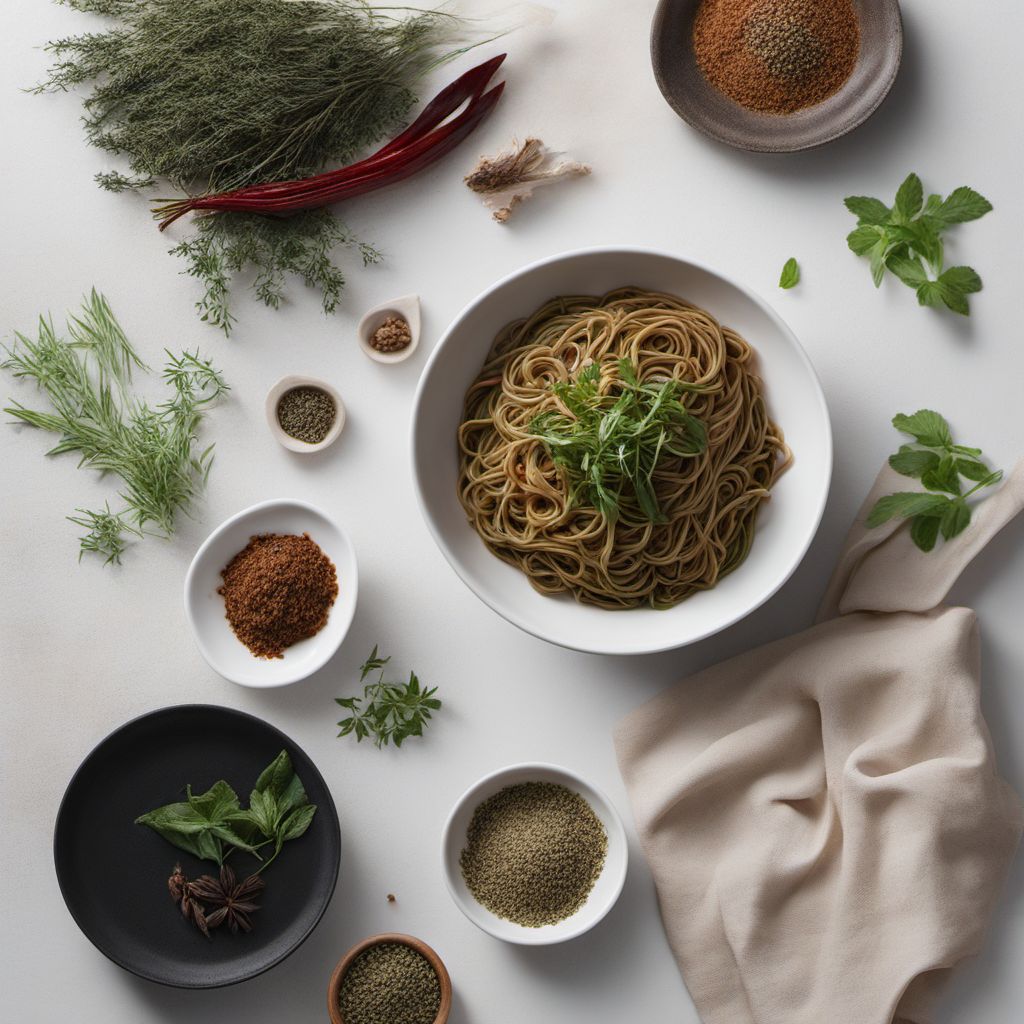
Recipe
Romani-style Wild Herb Soba
Savor the Wild: Romani-style Wild Herb Soba
4.6 out of 5
Indulge in the flavors of Romani cuisine with this delightful twist on the traditional Japanese dish, Sansai soba. This recipe combines the essence of wild herbs with the comforting warmth of soba noodles, creating a unique and satisfying culinary experience.
Metadata
Preparation time
15 minutes
Cooking time
25 minutes
Total time
40 minutes
Yields
4 servings
Preparation difficulty
Easy
Suitable for
Vegetarian, Vegan, Gluten-free, Dairy-free, Nut-free
Allergens
Wheat (soba noodles)
Not suitable for
Paleo, Keto, Low-carb, High-protein, Meat-based diets
Ingredients
In this Romani adaptation of Sansai soba, we incorporate Romani spices and select wild herbs that are commonly found in Romani cuisine. The broth is infused with Romani flavors, giving it a distinct taste. Additionally, we use traditional Romani cooking techniques to enhance the overall flavor profile of the dish. We alse have the original recipe for Sansai soba, so you can check it out.
-
200g (7 oz) soba noodles 200g (7 oz) soba noodles
-
1 liter (4 cups) vegetable broth 1 liter (4 cups) vegetable broth
-
1 onion, finely chopped 1 onion, finely chopped
-
2 cloves of garlic, minced 2 cloves of garlic, minced
-
1 teaspoon paprika 1 teaspoon paprika
-
1 teaspoon cumin 1 teaspoon cumin
-
1 teaspoon dried thyme 1 teaspoon dried thyme
-
1 teaspoon dried oregano 1 teaspoon dried oregano
-
1 bay leaf 1 bay leaf
-
200g (7 oz) mixed wild herbs (such as nettle, dandelion greens, and wild garlic) 200g (7 oz) mixed wild herbs (such as nettle, dandelion greens, and wild garlic)
-
Salt and pepper to taste Salt and pepper to taste
-
Olive oil for cooking Olive oil for cooking
Nutrition
- Calories (kcal / KJ): 250 kcal / 1046 KJ
- Fat (total, saturated): 3g, 0.5g
- Carbohydrates (total, sugars): 50g, 5g
- Protein: 8g
- Fiber: 5g
- Salt: 2g
Preparation
-
1.In a large pot, heat olive oil over medium heat. Add the chopped onion and minced garlic, and sauté until translucent.
-
2.Add the paprika, cumin, dried thyme, dried oregano, and bay leaf to the pot. Stir well to combine the spices with the onion and garlic.
-
3.Pour the vegetable broth into the pot and bring it to a boil. Reduce the heat and let it simmer for 15 minutes to allow the flavors to meld together.
-
4.Meanwhile, cook the soba noodles according to the package instructions. Drain and set aside.
-
5.Add the mixed wild herbs to the simmering broth and cook for an additional 5 minutes until the herbs are wilted.
-
6.Season the broth with salt and pepper to taste.
-
7.Divide the cooked soba noodles into serving bowls and ladle the hot broth with wild herbs over the noodles.
-
8.Serve the Romani-style Wild Herb Soba immediately and enjoy!
Treat your ingredients with care...
- Wild herbs — Ensure that the wild herbs are thoroughly washed and free from any dirt or debris before using them in the recipe.
Tips & Tricks
- If you can't find soba noodles, you can substitute them with whole wheat or gluten-free noodles of your choice.
- Experiment with different combinations of wild herbs to find your preferred flavor profile.
- For an extra kick of spice, add a pinch of chili flakes to the broth.
- Garnish the dish with fresh herbs, such as parsley or cilantro, for added freshness.
- Serve the Romani-style Wild Herb Soba with a squeeze of lemon juice for a tangy twist.
Serving advice
Serve the Romani-style Wild Herb Soba hot, accompanied by a side of crusty bread or Romani flatbread.
Presentation advice
Present the Romani-style Wild Herb Soba in individual bowls, with the vibrant green color of the wild herbs contrasting against the soba noodles. Garnish with a sprig of fresh herbs for an appealing touch.
More recipes...
For Sansai soba
For Japanese cuisine » Browse all
More Japanese cuisine dishes » Browse all
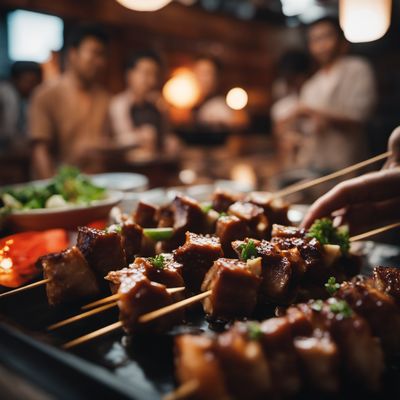
Kimo yakitori
Chicken liver skewers
Kimo yakitori is a Japanese dish made with grilled chicken liver.
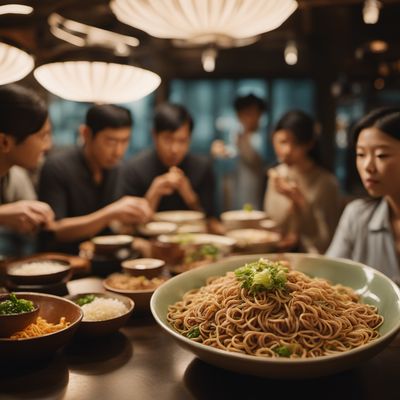
Hegi soba
Hegisoba
Hegi soba is a Korean noodle dish that is typically served as a lunch or dinner dish. The dish is made with thin, chewy noodles made from...
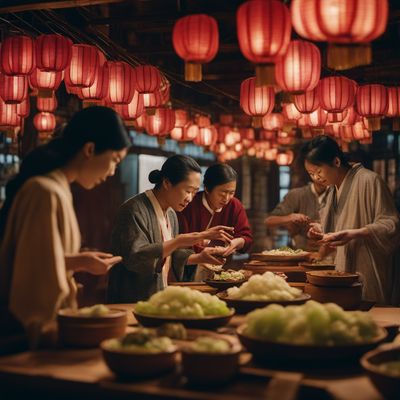
Takuan
Takuan is a traditional Japanese pickle made from daikon radish.
